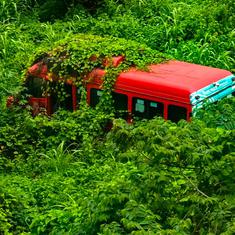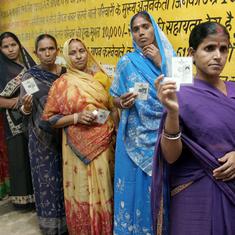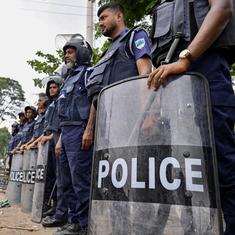Nilakshi Joshi’s day starts early. Every morning, she and her six-year-old son walk from their home in Shivaji Nagar, a massive cluster of slums in the east of Mumbai, to the nearest bus stop to board a red bus at 7 am.
The bus is operated by Brihanmumbai Electric Supply and Transport, the city’s public bus company. Joshi and her son travel 5 km to his school, after which she returns home. A few hours later, at 11 am, she repeats this journey to pick him up.
Like Joshi, Delhi resident Ramvati also relies entirely on the bus system for her daily commutes. Every morning, she travels around 2 km in a low-floor bus run by the Delhi Transport Corporation, from the densely built colony of Tughlaqabad Extension in south-east Delhi to high-rise apartment buildings where she is a domestic worker.
She takes a bus back home at around 1.30 pm to pick her son up and drop him off at tuition classes after school. She waits an hour there, then heads back home with him.
Both Ramvati and Joshi’s waits at their bus stops should not exceed 20 minutes, according to the timetables of the transport corporations of these cities. But when Scroll met them in late July, Joshi ended up waiting for 45 minutes before her bus arrived, and Ramvati for around an hour.
Both said such delays were common.
“I would have reached home by now had I gone walking, instead of all this waiting,” said Ramvati. But walking 2 km with her young son would not be easy. “If the bus comes on schedule, it would be so easy for us,” she said.
Joshi said with the delays piling up, her commute ends up taking three to four hours of her day.
But despite the poor service, the bus is the only feasible option for many residents.
In Delhi, commuters such as Ramvati continue to use them because buses are free for women and cheaper than the metro and shared autos.
In Mumbai, they are crucial because they have a wide network that extends deep into residential colonies – they also act as feeder transportation to local railway stations. The train is the backbone of public transport in the city, used by 70 lakh commuters each day.
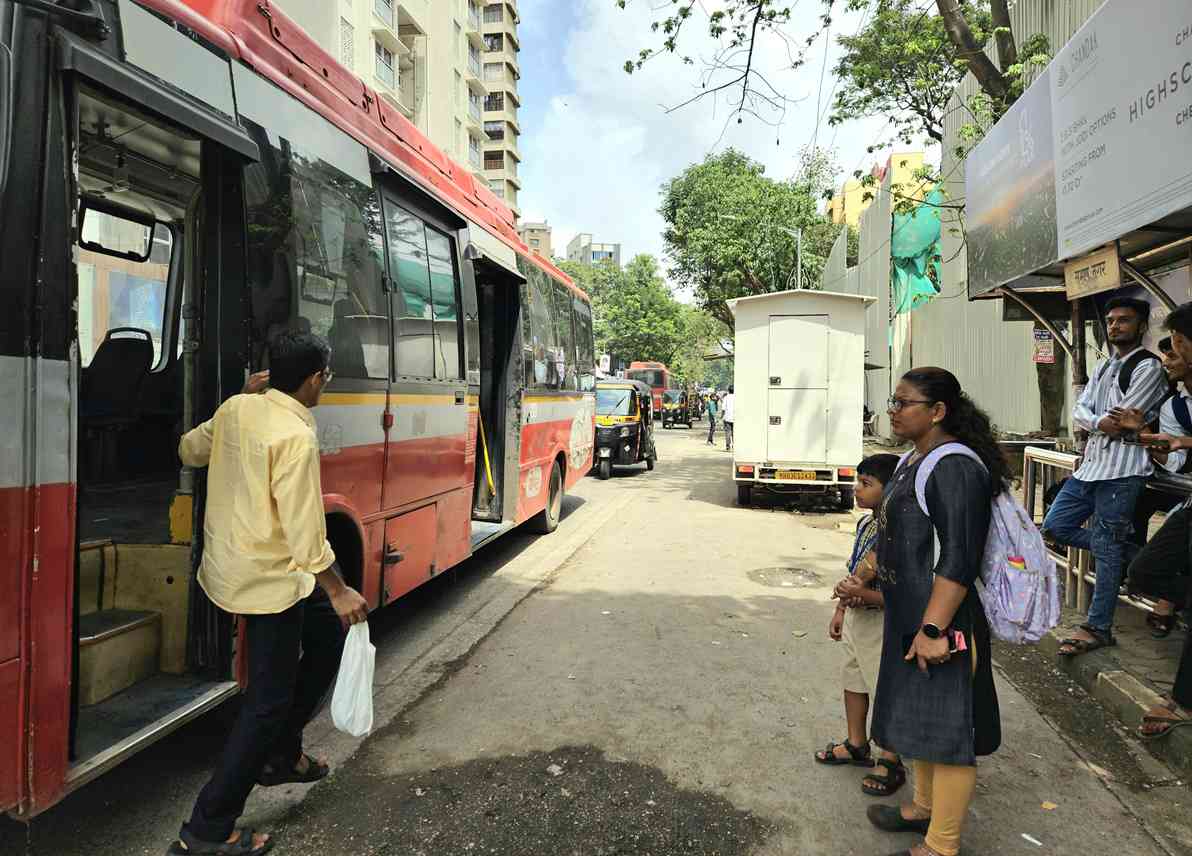
The struggle that Joshi and Ramvati face in their daily commutes is reflected in stark statistics: ridership numbers in both cities have dropped sharply. In Mumbai, since 2011, daily ridership has fallen by 44% – from 35.8 lakh to just over 20 lakh. In Delhi, meanwhile, between 2019 and 2023, daily ridership fell around 19% from 51.02 lakh to 41.41 lakh.
Even as the two cities have taken different approaches to managing their fleets, the availability of buses in both has fallen short of the benchmark set by the union ministry of housing and urban affairs.
According to this standard, there should be 60 buses for every one lakh residents for cities with populations of more than 20 lakh, such as Mumbai and Delhi. But Delhi has only around 45 buses for every lakh residents and Mumbai, around 21.6 for every lakh, said Sayan Roy, who works at the sustainable mobility programme at the Centre for Science and Environment.
“The buses have not been able to match the increasing populations arriving in cities of Mumbai and Delhi,” Roy said.
This is the second part in our ‘Urban Immobility’ series. Read more stories here.
Mumbai’s declining fleet
In Mumbai, not only have the number of buses failed to match the rise in population, the number has actually fallen by around 40% since 2011. That year, the fleet consisted of 4,385 buses. Today, only 2,594 buses are in operation, data from the Brihanmumbai Electric Supply and Transport shows.
Part of the reason the government has cut fleet numbers is the poor financial health of the corporation: it saw losses rise from Rs 336 crore in 2021-’22 to Rs 1,038 crore in 2022-’23, according to a report by Aamchi Mumbai Aamchi BEST, a citizen-led group for bus commuters. “This is one of the reasons why state undertakings are not able to buy more buses to improve poor frequency,” said Roy.
The fact that the service was “loss-making” was also a key reason why the municipal corporation, which provides financial aid to Brihanmumbai Electric Supply and Transport, in 2017 proposed a new model of “wet-leasing”.
Under this arrangement, it would pay private operators to provide it with buses, as well as drivers, conductors and other staff and services.
Today, of the city’s total fleet, 16% are owned by the Brihanmumbai Electricity Supply and Transport, while 84% are privately owned.
Privatisation “is where the problem began”, said Hussain Indorewala, an urban researcher, who is a member of Aamchi Mumbai Aamchi BEST.
Indorewala explained that with this change, services deteriorated. Since the government was paying private players a minimal fee, he said, the operators have been cutting corners and compromising on services and maintenance to widen their profit margins.
This has increased disruptions, he said.
An Aamchi Mumbai Aamchi BEST report published in November 2024 noted that the bus system had been seeing “defaulting contractors, breakdown of buses, discontented workers, inconvenienced commuters, inadequate and poor quality services, and an incapacitated public sector”.
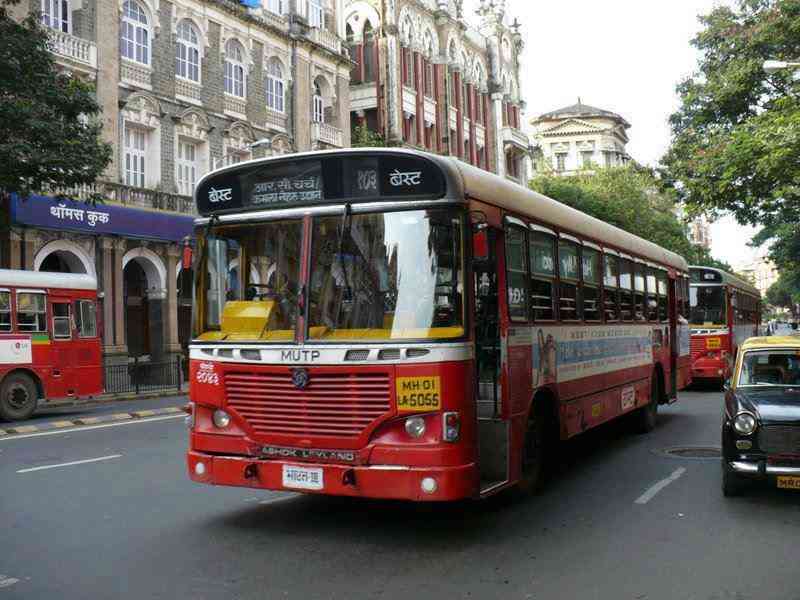
Jagnarayan Gupta, general secretary of BEST Kamgar Sanghatana, a union of drivers and conductors, said private operators also do not have adequate numbers of drivers and conductors. “Sometimes buses are delayed or cancelled due to non availability of staff,” he said. “And bus breakdowns have become even more frequent.”
The venture has been loss-making even for private operators – in the last two years, they have suspended services of at least 350 buses. More than a hundred have been parked in the Wadala depot for several months, covered by shrubs.
This process of privatisation and decline in services has occurred despite the fact that in 2019, the BEST Sanyukta Kamgar Kruti Samiti signed a memorandum of understanding with the Brihanmumbai Electrical Supply and Transport, under which the latter committed to procuring 3,337 buses that would be managed by the government.
“They have still not implemented it,” said Gupta. “We are left with old buses and maintenance issues.” Older buses sometimes even catch fire due to short circuits. This year, five such fire mishaps have occurred, data compiled by Scroll showed.
In addition to the poor services, commuters are shifting away from buses for other reasons also, such as increased fares, experts said. This May the city hiked prices from Rs 5 to Rs 10 for a minimum distance of 5 km in regular buses and from Rs 6 to Rs 12 for air-conditioned buses.
To add to commuters’ frustrations, even as bus services have declined, private vehicles continue to crowd the city’s roads. A report by the Municipal Corporation of Greater Mumbai noted that private cars contribute 41% to traffic congestion in the city and two-wheelers 29.1%. The figure for buses is only 2%.
The Brihanmumbai Municipal Corporation spokesperson told Scroll that the body only provides financial aid to the bus service. “We do not participate in its administration,” the spokesperson said. Scroll sent the Brihanmumbai Electrical Supply and Transport general manager a text message seeking comment on the problems. This story will be updated if he responds.
Delhi’s experience with privatisation
In Delhi, too, the public sector Delhi Transport Corporation has struggled with massive losses.
The corporation has for years been unable to recover its operational costs on any of the 468 routes it ran, resulting in a loss of more than Rs 14,000 crore between 2015 and 2022.
At the same time, the number of buses has reduced as the fleet has aged. Between 2015 and 2022, the number of city corporation buses in Delhi fell from 4,344 to 3,762 as buses aged and went out of use, and were not replaced by new vehicles, according to a 2025 Comptroller and Auditor General report.
As of 2023, the report noted, 45% of the total number of low-floor buses the corporation operates were overage.
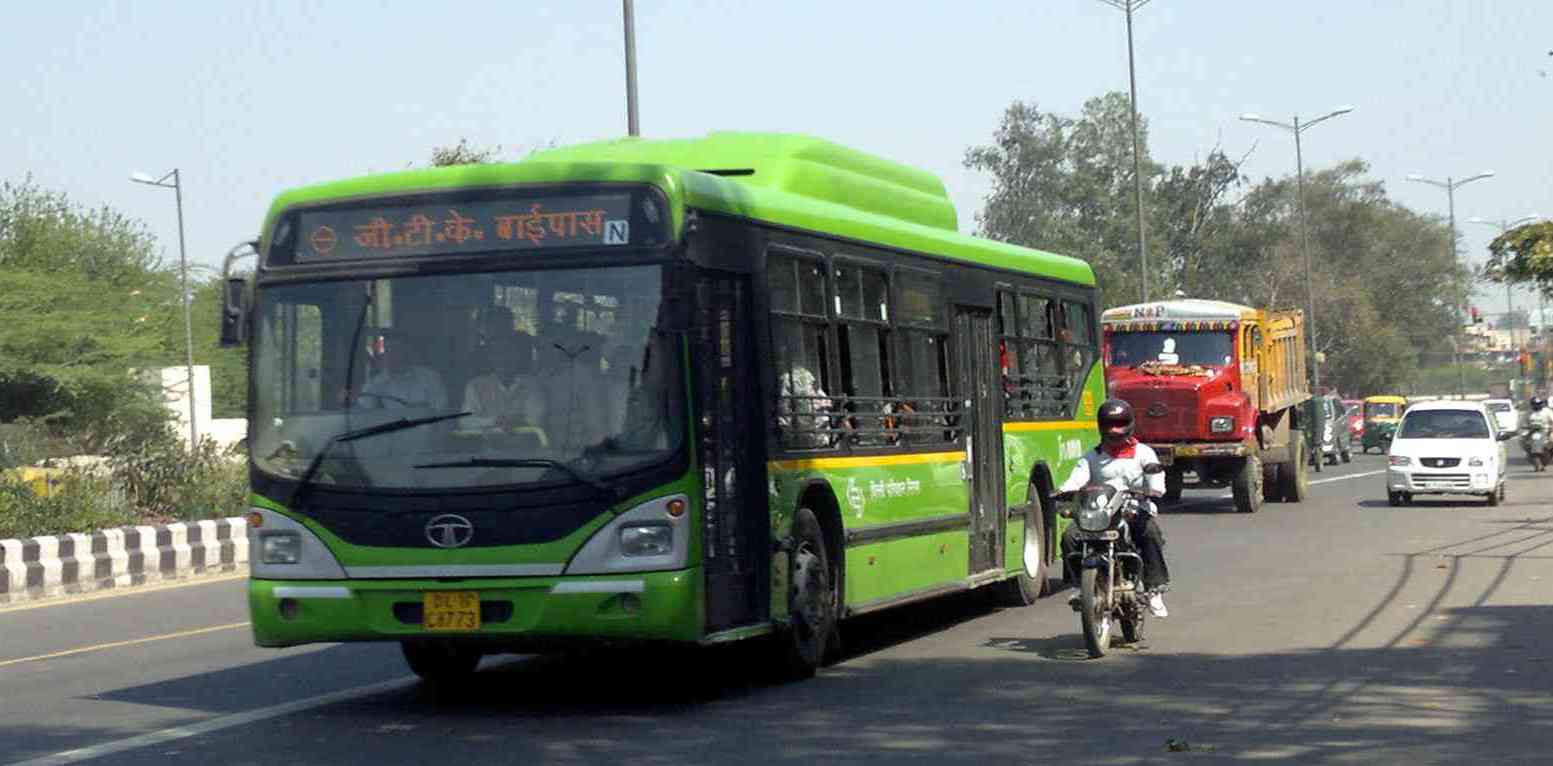
The corporation has also struggled to efficiently use the buses it does have. The same report found that it was using only 85% of its total existing fleet due to “frequent breakdowns, unavailability of adequate buses and absenteeism of drivers/conductors which limit the number of buses available for operation”.
Like Mumbai, Delhi too has turned to the private sector to help maintain its bus services. This model was inaugurated in 2010, when the Delhi government signed on the Delhi Integrated Multi-Modal Transit System, a joint venture with the Delhi government to run buses in the city.
Today, these “cluster buses” operate on 209 routes, while the Delhi Transport Corporation operates on 259 routes. Another 138 are shared by both.
The city has seen better results than Mumbai with its move towards privatisation – 99% of the existing cluster bus fleet is used, and the number of these buses fleet has consistently risen over the years, from 1,744 in 2017 to 3,293 in 2023.
“Cluster services are operated under a service model, where the operator is paid based on kilometres operated and is bound by service-level agreements,” said Avinash Dubedi, Program Head of Transport at WRI India, a research organisation.
Dubedi explained that these agreements included obligations to meeting defined standards of performance. “Failure to meet them can result in penalties, and so it incentivises operators to achieve planned fleet utilisation levels,” he said.
On the ground in Delhi
But though Delhi’s bus system may boast healthier numbers than Mumbai’s, its many flaws are apparent on the ground.
Key among these is the difficulty of reaching bus stops. According to a ministry of housing and urban affairs’ policy, the ideal distance from city centres to the nearest public transport transit point is 500 metres. But a 2025 study found that nearly 31% of the land in Delhi’s built-up areas lie outside this walkable range.
“A large part of Delhi does not have pedestrian-friendly walking space that leads to bus stops,” said Roy. This pushes many to use autos or shared autos, he added.
“So even if the bus is on a convenient route, people choose not to take it because the last few minutes to reach home from the bus stop are not good in rain or harsh sun,” he said. “We need to strengthen these services with efficient and accessible fast and last mile facilities.”
The extent of this problem is apparent in the experience of Tej Kumari, a resident of Dakshinpuri, who is a domestic worker.
For 30 years, rather than take the 5-km road route by bus, Kumari walked 3 km through a forest each day to reach her workplace. This was because the nearest bus stop to her home was located at an inconvenient distance, and she would have had to spend Rs 20 on a shared auto to reach it.
“I can buy 250 grams of vegetables for that much,” she said.
But in the last three months, her feet have been hurting and so she has been taking the bus – at great inconvenience. “I have to take two buses, changing one midway, and then finally take a shared auto to reach home since the bus stop is not at a walkable distance from home,” she said.
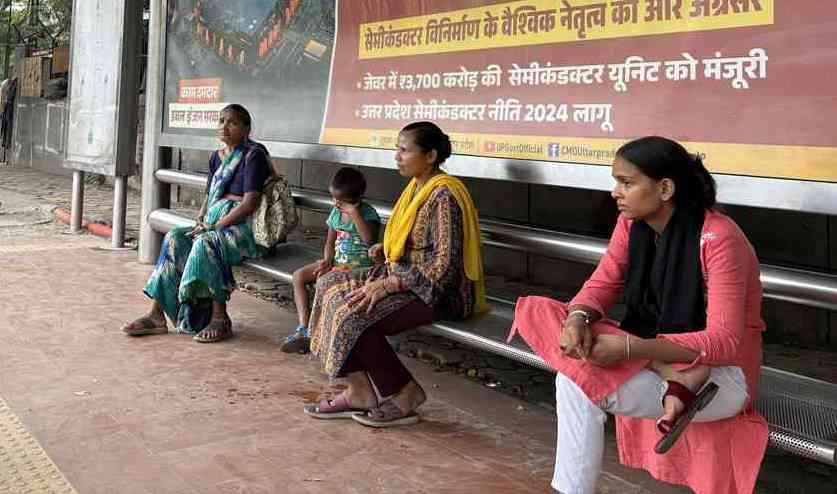
This has not only increased the amount of money she spends on commuting but also the time. She explained that walking through the forest takes her about 30 minutes, but that the bus journey, which includes waiting for buses and interchanging, takes about an hour – sometimes more.
Since April, her trip has become slightly quicker, after the government introduced a fleet of smaller sized electric buses called the Delhi EV inter-connector, or DEVI buses. Operating on shorter routes, these buses initially ran frequently, but commuters told Scroll they had begun seeing delays over the past two weeks.
The Delhi Transport Corporation did not respond to Scroll’s requests for comment.
Connectivity in Mumbai
In Mumbai, too, commuters spoke of problems with catching buses as the number of vehicles has gone down and routes have been cancelled.
For instance, in July 2021, there were 468 bus routes in operation in the city – by June 2025, that had fallen to 404 routes. Among the 64 that were cancelled many were long-distance routes.
Seventy five-year-old Nirmal Ruia fumed at the number of times he has to now change his modes of transport. From Kurla, where he runs a retail store, he is forced to take an auto rickshaw to Marol metro station and then a metro ride to Seepz, followed by a few minutes walk to reach home. “Earlier there were many buses on that route,” he said.
Dubedi of WRI noted that many state bus corporations were struggling with falling revenues as ridership reduced. At the same time, operating costs being pushed up by higher fuel prices and increased maintenance requirements.
“This combination weakens their capacity to procure new fleets and adopt technologies necessary to make the bus system more reliable,” he said.
But some argue that such enterprises must not be guided by financial motivations. “BEST is a public service,” said Indorewala. “The government must not expect profit out of it.”
Added Roy of the Centre for Science and Environment, “The government should think of it as a public service similar to water and electricity, which they provide in subsidised manner.”

